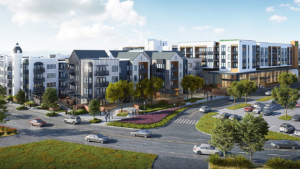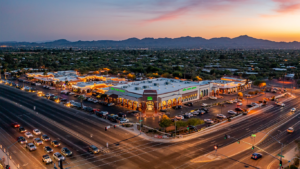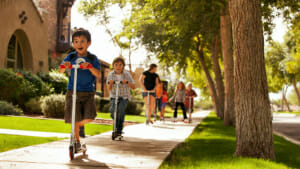Five cities in Arizona were recently listed among the 15 top fastest-growing cities in the U.S. – Queen Creek, Buckeye, Casa Grande, Maricopa, and Goodyear.
As a result of rapid growth in metro Phoenix, the city launched an Adaptive Reuse Program, which is one of the most comprehensive programs of its kind. While growing economic vitality, the program encourages developers to adapt older business buildings for new uses. The re-dedication of underused land or old buildings for renovation, through new construction, is vital to provide increased housing and mixed-use facilities to booming cities like Phoenix.
READ ALSO: 5 of 10 fastest-growing Arizona cities are in the West Valley
With more than 1.64 million residents and growing, Phoenix offers substantial residual space that is ideal for experimenting with innovative architectural designs that further support urban development. Infill projects that include construction of additional living spaces or mixed-use development on existing commercial or residential lots, is a viable solution to the housing shortage Phoenix is experiencing with the rapidly growing population.

In recent years, local developers, and architects including DAVIS, have invested time and talent, and made considerable progress in urban infill development. One example of a repurposed development was the functionally obsolete building DAVIS turned into the FOUND:RE – a vibrant and unique boutique hotel located near many community and cultural amenities in Phoenix’s urban core.
Vacant buildings such as FOUND:RE are fairly easy to come by in downtown Phoenix and provide an opportunity for new ‘upcycling’ concepts that benefit the community. FOUND:RE, for example, supports local artists on a rotating schedule throughout the lobby, corridors, pool area and onsite restaurant.
Located on Tempe Town Lake in Tempe, Marina Heights is another example of mixed-use architecture on 20 acres spanning across the landmark lake’s corridor. The multi-building design incorporates retail amenities like coffee shops, restaurants, medical and fitness facilities, and includes a huge lakeside plaza to the City of Tempe. The plaza is designed with trees, shade structures, seating and meeting areas, and open venue lawn areas for special events. The plaza links all five buildings and is designed to be a usable and welcoming space.
Another notable infill project in Tucson, RendezVous Urban Flats, revived an empty underutilized office building site into the RendezVous Plaza that merges residential, retail and office uses adjacent to the light rail. Even more, RendezVous incorporates a significant salvaged local art mural that builds community pride and reflects Tucson’s culture.
DAVIS encourages other architects and developers to take sustainable action by repurposing and greening structures to help generate economic vitality, preservation of Arizona history, and creation of more vibrant neighborhoods within our community. The repurposing of urban infrastructure is vital to providing energy efficient living, strengthening communities, and building a sustainable future for growing cities, including Phoenix, and throughout the U.S.
Author: Michael W. Krentz AIA, LEED® AP, is president of architecture and design firm, DAVIS. Founded in 1991, DAVIS is an architecture, interiors and urban design firm specializing in exceptional commercial and residential mixed-use properties. DAVIS is in the business of creating extraordinary designs of timeless and contemporary residential, commercial, and mixed-use public and private investment properties. Visit thedavisexperience.com for more information.




